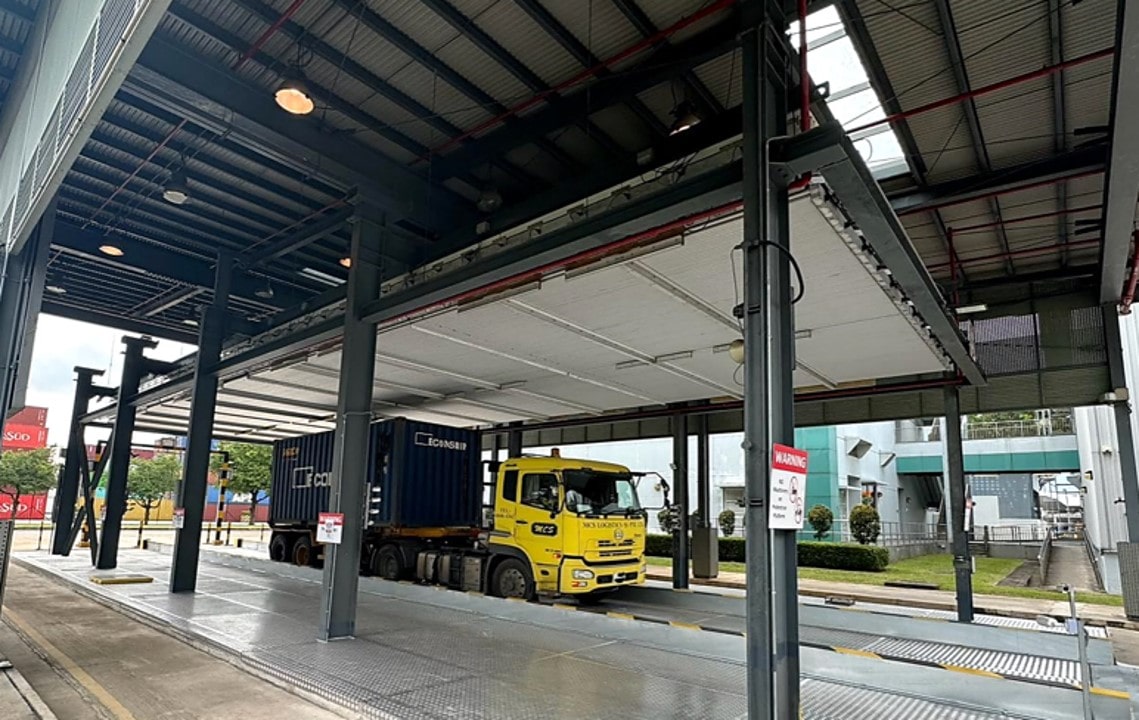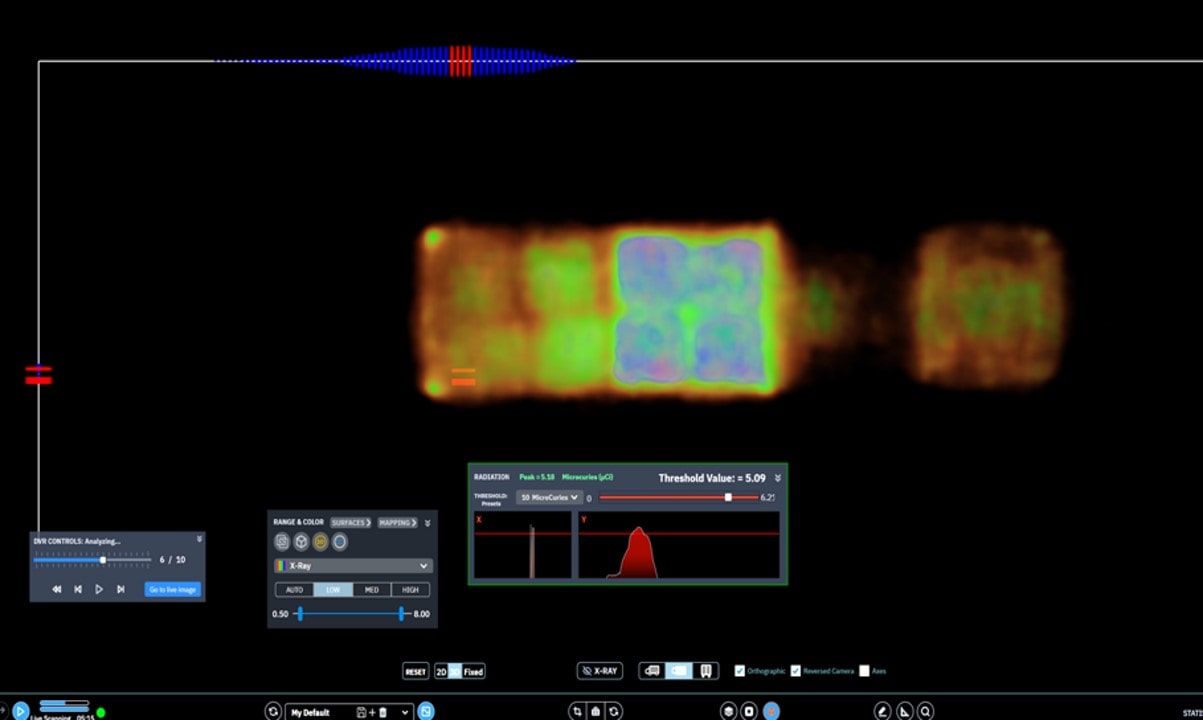 A shipping container at the Muon-based Scanning Portal. (Photo: HTX)
A shipping container at the Muon-based Scanning Portal. (Photo: HTX)
Cosmic rays are naturally occurring high-energy particles or groups of particles that originate from the sun or from other stars in our galaxy or even distant galaxies. They travel at almost the speed of light, and when they enter our atmosphere they continuously generate showers of subatomic particles including muons and electrons.
While muons are more highly penetrating than X-rays, they are non-ionising, which means they are a powerful yet totally safe method for scanning objects. In the past, muons have famously been used to help archaeologists scan for hidden chambers inside the Great Pyramid of Giza. HTX’s Chemical, Biological, Radiological, Nuclear, and Explosives (CBRNE) Centre of Expertise (CoE) is currently using them in a proof-of-concept trial to improve the X-ray scanning process for cargo entering Singapore.
While X-ray scanning is a powerful tool to detect attempts to smuggle contraband or security sensitive materials such as explosives or narcotics into Singapore, it is not a perfect scanning solution, as X-rays are not able to penetrate past 400 mm of steel. Muons, which can penetrate over 1000 mm of steel, are hence a good solution to complement the existing X-ray scanning infrastructure at Singapore’s checkpoints. Suspicious cargo identified by X-ray scanning can be sent for muon scanning to look for any deeply-hidden smuggled materials.
CBRNE CoE has set up a trial Muon-based Scanning Portal (MBSP) to test the effectiveness of muon scanning. The test scenarios that were conducted included attempts to smuggle narcotics, explosives, and radiological material hidden within cargo shipments. Not only was the MBSP able to detect anomalous voids, which could be concealed illicit materials in the shipments, it was also able to pinpoint the location of the radiological material!
 The MBSP shows the radiological material as red horizontal bars in the cargo. (Photo: HTX)
The MBSP shows the radiological material as red horizontal bars in the cargo. (Photo: HTX)
This combination of X-Ray and muon scanning is the next generation of cargo inspection, and CBRNE CoE is working on incorporating Artificial Intelligence (AI) to further improve the inspection process! AI will help security analysts identify anomalies in X-Ray and muon scans and quickly classify these anomalies into the most probable types of contraband or security sensitive materials such as explosives. If muon scanning passes the trial and is implemented across Singapore’s border checkpoints, the next generation of cargo inspection will further secure Singapore’s borders.
The next generation of cargo inspection was recently showcased at the Milipol Asia-Pacific – TechX Summit 2024 exhibition held at the Marina Bay Sands convention centre from 3-5 April 2024.

